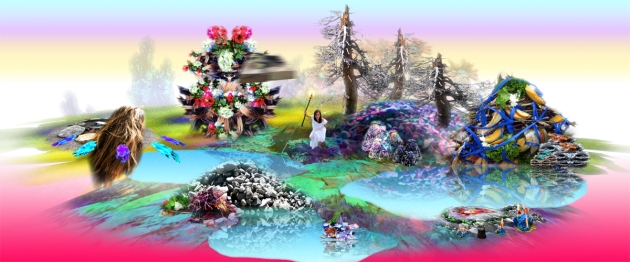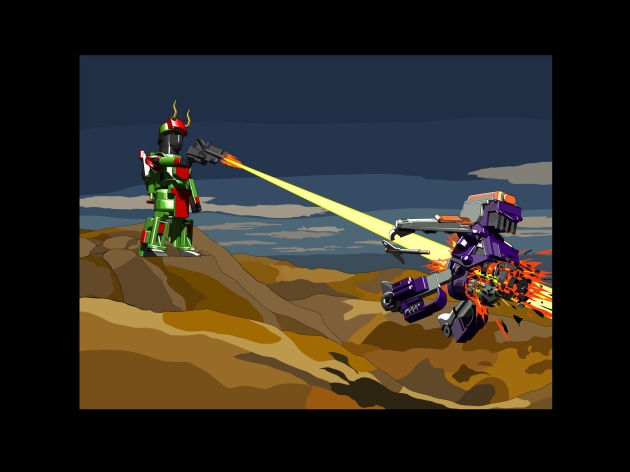Preface: I wrote this article for a company newsletter years ago when I worked as an interior designer for IKEA. These are not the opinions of IKEA, nor are they responsible for anything I wrote. This was an informative essay on a book and articles I had recently read and still find pertinent today. This by no means has any association to IKEA other than I used to work there and write about design in our store newsletter. This was also written at the time American soldiers (including relatives of mine) were entrenched in battle in Iraq, Afghanistan, and other parts of the Middle East. I mention the war there, as opposed to the war we have with saving our planet. I mean no disrespect to our fighting men and women, who are still fighting today as they did over 7 years ago when I wrote this article. We have wars on many fronts and our environment is another battle we must confront as citizens of the world and the United States of America.
Original Preface and Article begins here:
When I mentioned to our editor I was writing on our global environment, he was shocked and stammered, “You’re not writing about interior design?” I generally write about design as a whole and I explained to him that a book inspired me for designers on ecology, “Cradle to Cradle”. This book not only informs people on the environment, but also encourages architects, apparel, and industrial (product) designers along with their manufacturers to develop eco-friendly products for our planet. What has been the most difficult thing for me, is organizing information, which I’ve learned in the last few months researching and writing this article. Consider this an introduction to a global problem caused by the industrialized world. I can only provide a little information (what I know) and where you can begin on your quest to create a better life for yourself and your neighbors.
T.E.
I wish the title of this article were an overstatement. Unfortunately it is not. I use the words “grave and deteriorating” coined by the specially appointed non-partisan Iraq Study Group, to emphasize an even greater war. The battle we should be tactically inclined to encounter and win is protecting our planet. And we must fight the toughest of opponents, a great enemy, ourselves.
First, I’m of a mind to judge myself above any fellow humankind, criticizing my habits. I’m not doing enough to truly stop the damage of our only home on the home front. I own a house, which creates harmful CO2 gases through my use of energy (gas and electric). I enjoy eating beef (steaks and burgers), which is responsible for more noxious CO2 caused by grazing cattle flatulence (not just mine). And I also make mistakes with weekend errands, creating unnecessary pollutants driving my car due to poor organizing and planning. I also used to pollute by smoking a pack of Marlboro reds daily for more years than I care to admit. These are just of few things I’ve done or still do which damage our atmosphere. I haven’t included all the useless things I’ve bought or which I neglected to recycle, now resting somewhere in a giant landfill.
Next, I’m beginning to discover something now as an adult; I need to start acting like one. I need to be even more responsible for my action and take into account the way I live. I’m learning to be “greener” and try to develop an eco-friendlier lifestyle. The problem remains my habits and many of us need to acknowledge how ones life affects the many. I’ve noticed already that it takes a considerable amount of effort to do this and that’s good. It may be an indicator that I must simplify my life to avoid more work ahead. I reflect on all the boxes and paper I recently recycled during the holidays. Breaking down boxes to a specific dimension for curbside recycling took a lot of my energy and I should reconsider this next year. Other elements to mull over include recycling all my paper, separating plastic, metal, glass from rubbish. Composting cut grass and raked leaves instead of bagging or burning is obviously a better alternative. And am I driving the best vehicle achieving a 30 Miles per Gallon fuel efficiency or better for my DAILY commute? These are questions we all must ask ourselves to win this war for our homeland. Also, we need to recognize ourselves as inhabitants of our planet, not an entity above and beyond the world where we exist. We are every bit a part of it like other living creatures and such here on earth. We share the same air, water and soil. However humankind seems to be the real destructive element in the larger scheme of things.
Another problem I’m encountering to this agenda of being greener is familiarizing myself with all the new words and phrases used to describe eco-friendly living. I’m confused by so many of the new green diction and wonder what it all means. As I learn this I’m able to see the correlation to design itself. Many of my IKEA coworkers may recall my fist article on Basic Design. I mentioned how design is a system of organization for the benefit of function or survival and how aesthetic or beauty, almost by accident, evolves from those principals. This is what we all must do; organize ourselves a system, which will improve not only our way of life through economics and health, but create a beautiful environment at the same time.
Here are some sources I can share with you along with some of the terminology I’ve discovered recently. I hope this is a springboard for all of you to improve all of our lives. I assure you that I’m trying, even here at work. I’m using more of the energy efficient light bulbs in the room sets to familiarize our customers to the look (which matters). Also, IKEA will soon be offering Environmental training classes for all coworkers. I hope to participate in this program in the near future. And I just want to add, I just mentioned the word future. This is generally a positive notion of time, or at least is used to be. I can recall it culturally as a positive thing, space travel, and an equal and democratic society, a vision of well being for all. I fear that we have all become a little cynical and even jaded by the idea of progress (and I know many obstacles hinder this vision). I hope we can change our attitudes to create a better place for all of us. We need to adjust our own outlook on life and look to improving our own self and our habits if we are going to win this war to save our home. You can count on me and I hope I can rely on you too. Like soldiers in a bunker, uncertainty taunting us, we need each other now, to win.
Thank you and take care.
Biodegradable- able to be broken down into a non-harmful product usually through microorganisms and serve as a nutrient for other living things, food and paper byproduct can be integrated into the soil as a nutrient (fertilizer) for plant life.
Cradle to Cradle- waste which equals food. Our own breathing (good CO2) is used by plants and trees to grow. It in turn purifies our air. Also, products which are biodegradable also serve produces food from its own waste. We need to produce more post industrial products which don’t take up landfill dumps, but benefit our lives and surroundings.
Cradle to Cradle- the primary problem we have today; creating products that end up as useless waste or Crude Products. These are products which are a waste of space and often incinerated at various industrial plants for fuel, producing pollutants and carcinogens into the air (bad CO2).
Crude Products- Products that are not designed particularly for human and ecological health are unintelligent and inelegant. Generally these products fulfill the manufacturer’s desires and some customer expectations as well.*excerpt from “Cradle to Cradle”
Carbon dioxide (CO2) – Two major forms to this colorless gas, there’s a good form; our breathing. The bad type is through burning or combustion (factories, power plants, planes, trains, boats and automobiles, oh and my fav; flatulence.
Downcycling- the reducing quality of a recycled product over time such as steel, when over recycled, can lose its inert properties and tensile strength. Also, painted metal can release unforeseen toxicities through recycling.
Eco-Effective(ness)- Seeking alternatives to present problems concerning the environment. Using energy efficient appliances, light bulbs, collected rain water for gardening and lawn, fuel efficient cars (hybrids and full electrics) are all examples of this. However, these are only short term solutions; we really need to change how we are living, what we are producing and create less pollution and waste on a broader scale than we are now.
Leaching- whenever a pollutant or toxin is released into the environment; pollutants can enter into soil and leach into an underground water supply such as a well. Another harmful form of leaching can be what you where. Synthetic fleeces made from recycled water/soda bottles have antimony (a heavy metal toxin) only produced through recycling or downcycling and can be released onto your skin when sweating. Antimony can also be released into the air when incinerating these bottles. This is found in the polyester material and the gas released is considered bio available, available as a carcinogen (cancer causing) fume. IKEA products are unfortunately in this category. Read PIA facts and also notice how much environmental information is missing. Why?
Sources:
Cradle to Cradle, Remaking the Way We Make Things, William McDonough and Michael Braungart, North Point Press, New York, 2002.
worldchanging.com
Documentary DVD and book, An Inconvenient Truth, w/ former Vice President Al Gore.
WIRED magazine, May 2006 issue 14.05. Several articles on the environment including an article on An Inconvenient Truth.


